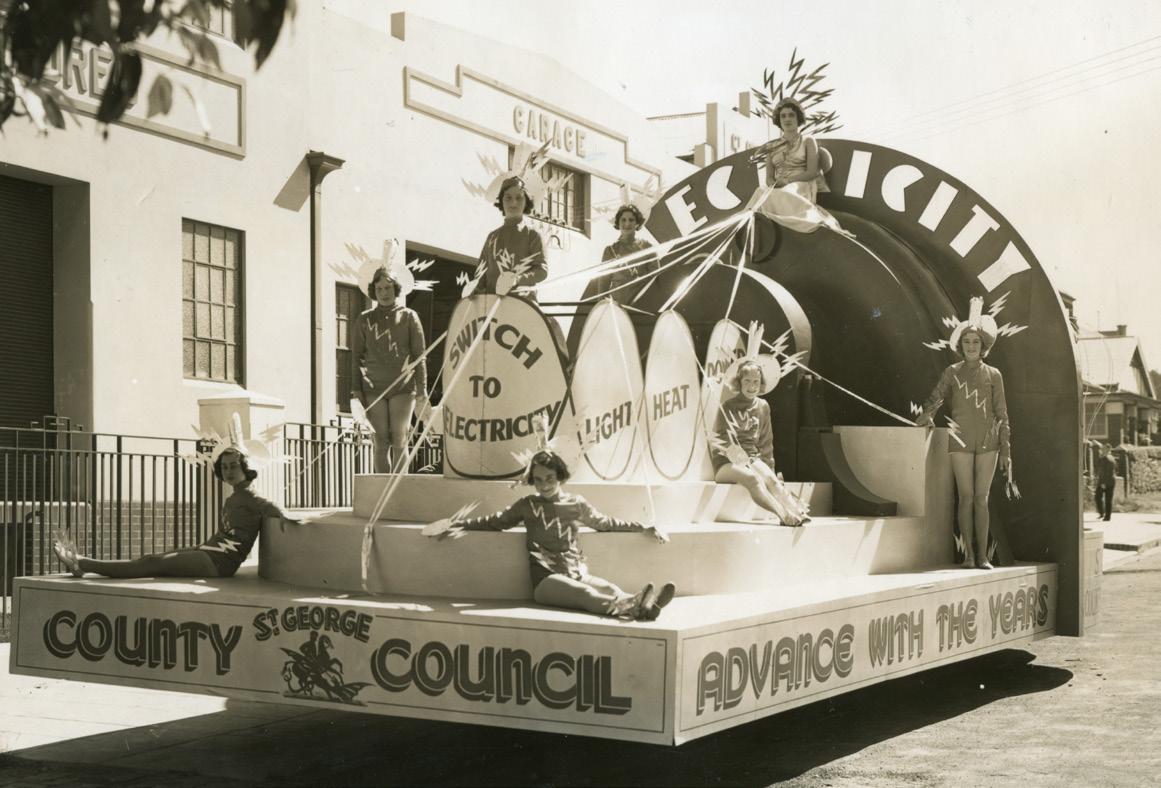
3 minute read
LOCAL HISTORY
Lugarno Ferry and Man Believed to be Ferryman, W Emery, Lugarno NSW, April 1922. Georges River Libraries Local Studies collection.
What’s in a name? Lugarno
Lugarno (originally Lugano) and Como were likely named by businessman James Murphy, who had pleasure grounds at Como from the 1880s onwards, in reference to the famous Swiss beauty-spots.
‘Lugano’ was applied to the crossing-points where the punt ferry service docked, and the earliest reference found of the name is from mid-1887.
In 1919 the Lugarno Bay Estate was subdivided, and this appears to have been the first time the intrusive ‘r’ in the name appeared. A further Lugarno Estate followed in 1920, and by the time Lugarno Public School opened in 1933 ‘Lugarno’ had become the preferred spelling of the suburb name.
The first land grant in the area was to Thomas Lawrence, who in 1831 was granted 120 acres in the vicinity of present-day HV Evatt Park. Surveyor-General Thomas Mitchell, who surveyed a shorter route to the Illawarra in the 1830s, was responsible for constructing Forest Road using convict labour, descending to the edge of the Georges River. A punt service, operated by Charles Roman, began in 1843, but did not prove to be a profitable business. It was re-established in 1887, by which time traffic had increased sufficiently to justify a regular service, and it became the responsibility of Hurstville Council after the 1906 Local Government Act came in. The Lugarno punt, which was latterly capable of carrying sixteen cars at a time, came to an end in 1974, following the completion of the Alfords Point Bridge the previous year.
HV Evatt Park was formerly an orchard and market garden, known locally as Webb’s Garden. Following representations from Lugarno Progress Association, in 1965 Hurstville Council was made trustee of the land, and named the park in memory of HV Evatt, former Member of Parliament and High Court judge. The ornamental lake in the park was created in 1984.
Lime Kiln Bay takes its name from an early 1800s lime kiln which was located at the end of Lime Kiln Road, but of which no trace remains. Crushed seashells burned in the kiln produced a supply of lime suitable for preparing building mortar. The lime would be taken to Sydney by coastal sloops.
Did You Know…? Local man, John Parrott, born at Soily Bottom Farm in 1831, enlisted in the Royal Navy, and served in the Crimean War of 1856. He was present at the siege of Sebastopol.
A little bit of carnival in Georges River
Floats have always been a creative outlet and a fun experience for the community and it seems Council was in on the fun.
The float below is from April 1938. To mark 150 years since the arrival of the First Fleet, a monster street parade was held through Kogarah and Bexley, ending up in Kingsgrove Park.
Leading the parade of floats was this eye-catching effort from St George County Council, which was the supplier of electricity to the area at that time.
Whoever designed the float had been watching the Flash Gordon serials at the cinema.
The float represented a huge electricity generator, and the girls represented ‘The Spirit of Electricity’, in red and green costumes with silver head-dresses.
The photo was taken outside the Council’s garage and stores in Premier Street, Kogarah.
Some of the other floats in the procession came from Tooth and Co, Texaco, Sydney Water Board, and Crown Crystal Glass, but the most popular was Burnett’s Foods, which gave away free lollies.
Image: St George County Council float for the 150 years since the arrival of the First Fleet April 1938. Georges River Libraries Local Studies collection.


Image: Bicentenary of James Cook in Australia, which took place in 1970. Georges River Libraries Local Studies collection.







